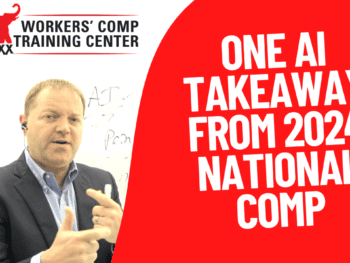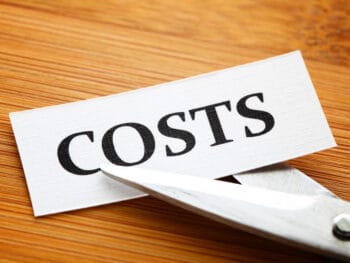
E-Mod Compares Your Loss History With Industry Average
To determine if your premiums are actually higher than average, ask your insurance broker for your “e-mod”. E-mod is your experience modification factor, which compares your company’s loss history with the loss history of other employers in your industry in your state. An e-mod of 1.0 is average. An e-mod below 1.0 (for example: 0.8) reflects a loss history that is better than average, while and an e-mod above 1.0 (for example 1.3) reflects a loss history that is worse than average for your industry.
If your e-mod is below 1.0, keep up the good work and even try to improve on it. If your e-mod is above 1.0, you need to tackle your higher than average workers’ compensation premiums.
There are several ways to tackle your workers’ compensation cost, including:
- A strong safety program
- Analyzing the cause of claims and eliminate them
- An effective return to work program
- Working with your adjuster
- Working with your injured employees
Click Link to Access Free PDF Download
Start By Working to Prevent Work Place Injuries
The first and most obvious way to tackle high work comp premiums is to eliminate workers’ compensation claims. This does not mean not reporting the work comp claims to the insurer. It means taking the necessary safety steps to prevent injuries from occurring in the first place. When a claim does not occur, there is no cost to the insurer and no cost to the employer (the indirect cost of an injury is often higher for the employer than the direct cost is for the insurer).
Analyze Your Loss Run For Injury Patterns
If you do not have the time or resources to make a total overhaul of your inadequate safety program (if your e-mod is higher than 1.0, your safety program is inadequate), analyze your loss run. An analysis of your loss run will show you which departments or which types of work create the majority of your work comp claims. By identifying where injuries occur or by identifying who is getting injured, you can take the necessary steps to eliminate the causes of injury. Ideally, using your loss run you could identify every cause of loss and take the necessary actions to prevent each type of injury in the future.
Return To Work Program
The second-biggest driver of high e-mods after an inadequate safety program is the failure to have an effective transitional duty return to work program. The sooner the injured employee is returned to work, the lower the cost of disability pay. Plus, various studies have shown that the longer an injured employee remains off work, the higher the probability that the employee will never return to work.
Get To Know Your Claims Adjuster
Take time to get to know your insurance adjuster handling your claims. Verify the adjuster is making same-day contact with injured employees and keeping in touch with the injured employees. Also, confirm the adjuster is taking the time to analyze each claim before setting reserves on it. If the adjuster doesn’t spend the necessary time to properly establish the reserves on the file, high reserves on your open claims – not actual payments – will be included in your loss history and will unnecessarily raise your e-mod.
FREE DOWNLOAD: “Step-By-Step Process To Master Workers’ Comp In 90 Days”
Employer Communication With Employee
Not only is it important for the adjuster to handle the injury claim well, it is very important that the employer does so too. The employer needs to keep in mind that the injured employee is still an employee and treat the employee fairly and with respect. The primary reason injured employees get attorneys (which drive up claim cost, which in turns drive up the e-mod) is the employee is concerned about their future and their family’s future. The employer who keeps in contact with the injured employee, and reassures the employee that their job is waiting for them as soon as the doctor will allow them to return to work, either light-duty or full duty, will have far fewer claims with attorneys who try to increase the claim cost so they can make a fee.

Contact: mstack@reduceyourworkerscomp.com.
Workers’ Comp Roundup Blog: https://blog.reduceyourworkerscomp.com/
©2020 Amaxx LLC. All rights reserved under International Copyright Law.
Do not use this information without independent verification. All state laws vary. You should consult with your insurance broker, attorney, or qualified professional.
FREE DOWNLOAD: “Step-By-Step Process To Master Workers’ Comp In 90 Days”















